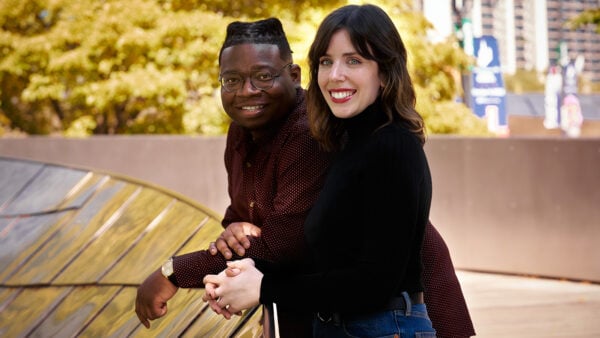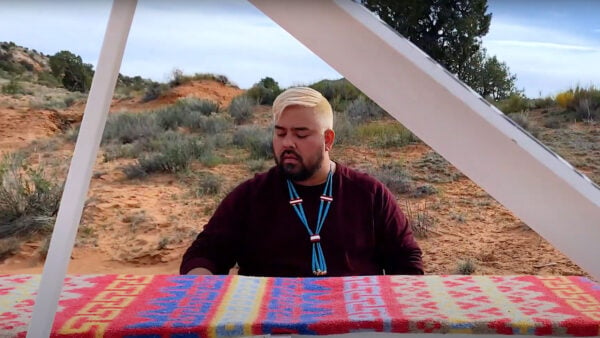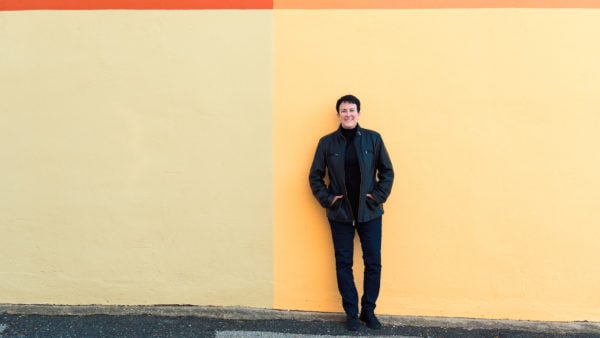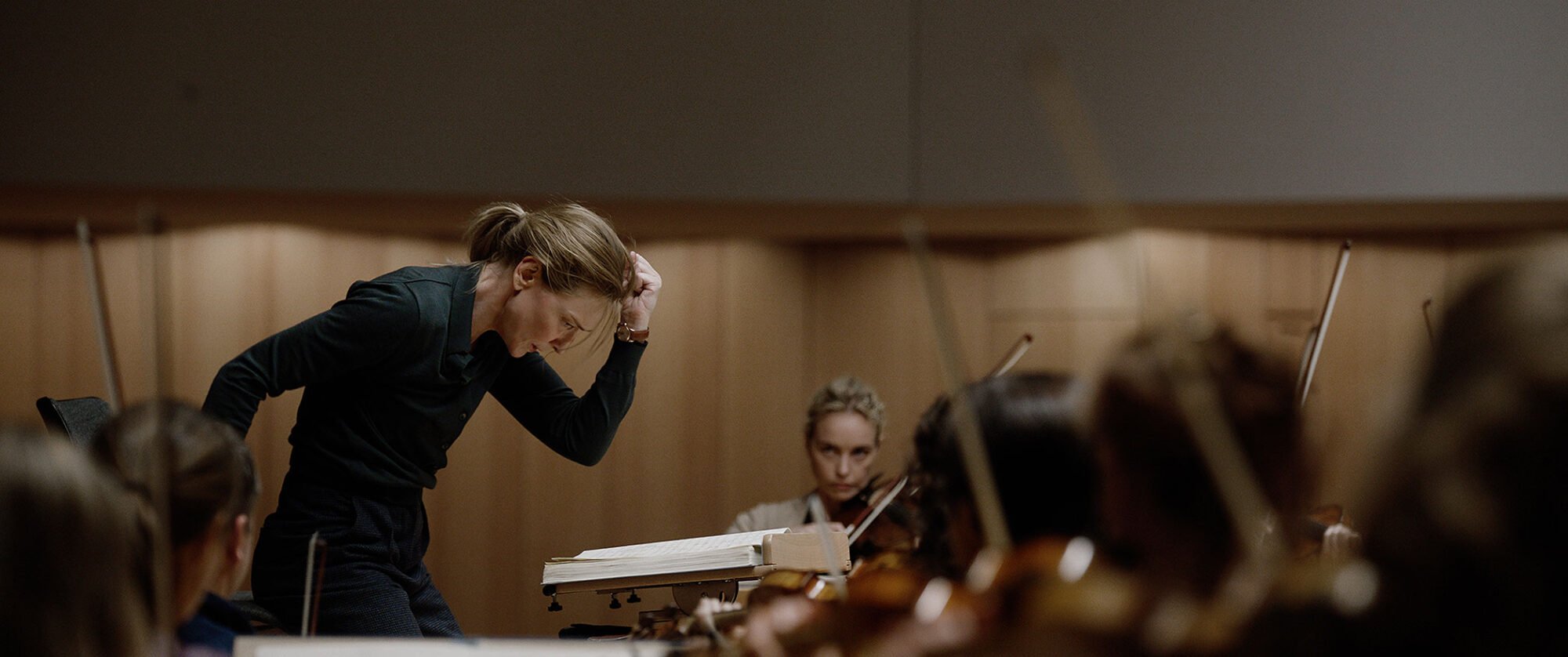
Lydia Tár (Cate Blanchett) rehearses the first movement of Gustav Mahler's Symphony No. 5 with her Berlin-based orchestra. Her wife and orchestra concertmaster Sharon Goodnow (Nina Hoss) watches her from the background. Credit: Courtesy of Focus Features
Early on in Tár, Todd Field’s 2022 psychological drama, we see Lydia Tár (Cate Blanchett) sit behind a piano and fluidly play Bach’s first C-Major Prelude from The Well-Tempered Clavier.
Tár—an ingenious, imperious conductor at the top of her game—isn’t merely winding out arpeggios for fun. She’s making a point to a student in her conducting seminar at Juilliard, plainly irritated that he’s decided to conduct Anna Thorvaldsdóttir’s atmospheric Ró instead of more traditional repertoire.
“[Bach’s] not pretending he’s certain of anything,” she tells him. “He knows it’s the question that involves the listener. Never the answer.”
That line could summarize the rest of Tár, a film that raises plenty of questions but offers few answers. When it came to music, however, writer-director Field — himself an amateur jazz trombonist — was anything but opaque: Tár’s script is crammed with highly specific musical references. Field compares one character’s piano playing to “the delicacy and sophistication of Constance Keene”; in a later scene, the title character recognizes a bust of Vasily Kalinnikov, a composer once championed by Tchaikovsky but today seldom heard outside of the former Soviet Union. Field even specifies the beats-per-minute speed of Tár’s gait. (120, in case you were wondering.)
Tár topped many critics’ Best of 2022 lists and netted six Oscar nominations, including Best Director and Best Screenwriter nods for Field, and Blanchett has already scooped up a Best Actress in a Motion Picture Drama nod by the Golden Globes. Less acknowledged, however, is how Tár’s music came to be, from the music that accompanies the film’s opening credits — a ceremonial song, or ikaro, from Peru’s indigenous Shipibo-Conibo culture — to securing the Dresden Philharmonic as onscreen talent.
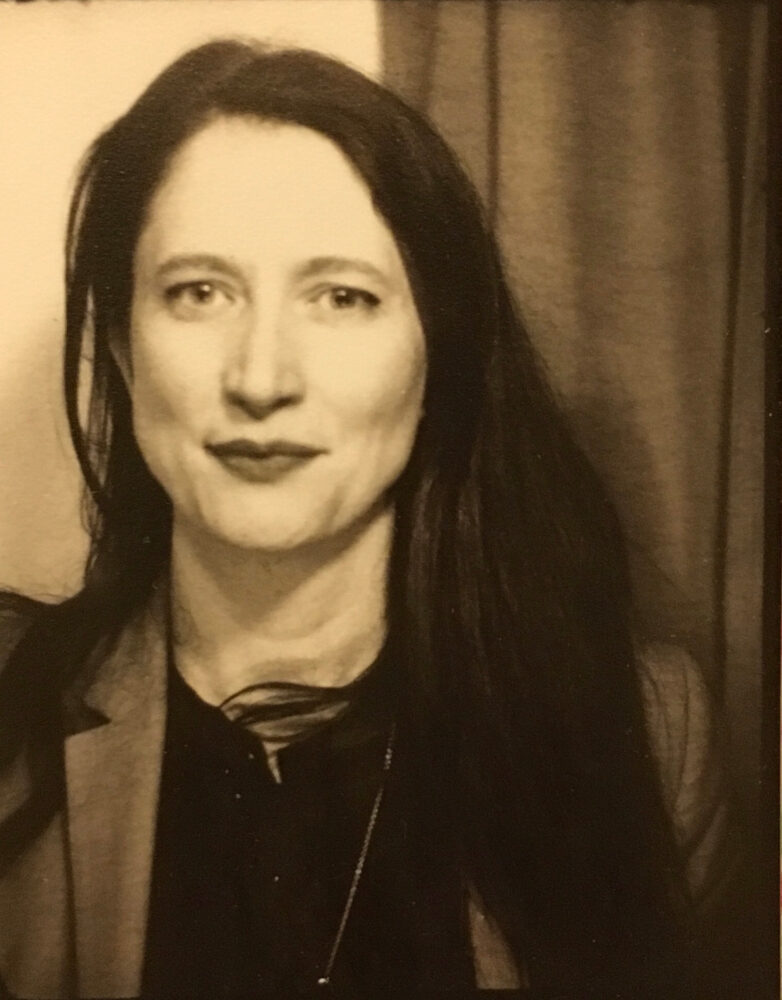
Music supervisor Lucy Bright
Enter: music supervisor Lucy Bright. After graduating college, Bright came to Warner Classics as a krautrock and EDM superfan skeptical of classical music. With the help of a dogged colleague, she eventually grew to love the repertoire, following it through subsequent experiences working for the British composer Michael Nyman and in the film and TV division of classical publisher Music Sales (now Wise Music Group). Now, Bright is a prolific music supervisor for TV shows and films, most recently winning a British Independent Film Award for Best Music Supervision for Aftersun (2022).
Even by Bright’s standards, working on Tár was something special. “I told Todd when I first spoke to him that I felt like he’d written it for me. It just felt so right,” she tells WFMT. “It's fairly unusual, as a music supervisor, to have had the classical music experience I've had. There were literally people in this script I've worked with, like Daniel Barenboim and György Ligeti.”
We connected with Bright for a spoiler-free conversation about the ethical considerations of music supervision, Tár’s most surprising musical Easter eggs, and more.
WFMT: The music in Tár seems to have been a priority from the jump. For starters, Hildur Guðnadóttir is name-checked in the very first line of Todd Field’s script. What does it look like on a logistical level to have music be such a major focus here, as compared to other films?
Lucy Bright: It is a huge logistical challenge. The only thing in terms of specificity that I can think of that would be equivalent is, like, Quentin Tarantino. I'm sure there's no question there. It's like, “Here are the songs I'm using, and you better be able to clear them all because there aren't any Plan B's!”
Of course, most of the big orchestral pieces were public domain. Then, with Anna Thorvaldsdóttir, [whose works are not public domain], I used to be her publisher at Wise Music. But she came on board—she was really into it, actually, even though you could say that that's a slightly controversial scene for her music to be part of, and discussed in the frank terms that it is.
Really, the only thing we ended up not being able to license was that original recording of “Here’s That Rainy Day,” from 21 Trombones [a 1977 jazz album, featuring Urbie Green as soloist].
WMFT: I wanted to ask you about that. That track is heard briefly in passing. But am I right in understanding that what we hear in the film is actually a studio recreation?
Bright: Again, it makes me love Todd even more for being so obsessive about detail. We couldn't find the master owner of this very specific recording that he wanted. So, we decided to try and recreate it, which ended up being this international recording with 20 trombones in the the New Trombone Collective in the Netherlands. Todd was very specific about a soloist [Alastair Kay], who was on holiday in the Rockies at the time. He had to come into Calgary to record his solo! Basically, we tried to make it sound as perfectly like the original as possible, and I think we succeeded.
I was really pleased when we put it on the soundtrack album, because in the film—I mean, it's a lovely use, but it's, like, a 90-second background thing. But having to recreate it became, in a way, more fun than just licensing the original tracks. Plus, the streaming numbers on that track are really high. After going through all that trouble, I feel like the world has been delighted by this new recording.
WFMT: Let’s talk more about the soundtrack album, which was released on Deutsche Grammophon, the same label Tár is trying to arrange a recording with over the course of the film.
Bright: Todd asked them very early, even before I was on board. They were totally into it and went along with the whole concept, even with using the classic yellow label!
WFMT: That album also includes Guðnadóttir’s full-length, orchestrated version of For Petra, the composition Tár works on over the film’s duration. However, we never hear it in its entirety onscreen.
Bright: Yes. A lot of Hildur’s music was being played in Cate’s ear on-set. It really was more about the rhythm for her.
Because Hildur lives in Berlin, Cate, Todd, and Hildur had a lot of time together to think about how For Petra could be incorporated in a sort of ghostly way. On the soundtrack album, the first vocal version of For Petra is literally Hildur’s iPhone recording of the very first thing she sent to Todd. If you listen closely to the film, you can hear it in places—it’s so woven into the sound design that it doesn't necessarily stand out.
WFMT: The album also includes the ikaro that opens the film — Cura Mente, sung by shaman Elisa Vargas Fernandez — which we later learn is a field recording from Tár’s time in Peru. I was left really curious about the song’s context and function.
Bright: There aren't that many recordings of those ikaros. Initially, we looked into licensing something, but it wouldn't quite work out like that. Ultimately, the sound mixer’s son happened to be on his gap year traveling in Peru, and we helped him find somebody who was willing to perform. Then, Cate's voiceover was added later.
There's a spiritual element to those songs, and they’re often very specific to the context in which they are sung. For that reason, it’s a more general song than some ikaros are. It was a big thing for us to make sure the performer was completely happy with the way her performance was incorporated within the movie and that it was done in a respectful way.
WFMT: On that point: It sounds like you sought out Anna Thorvaldsdóttir’s assent before using Ró for the Juilliard scene. Is that a pretty typical part of your job as a music supervisor?
Bright: Absolutely. That's key—not just with Tár, but with everything I do. I would say I’m over-careful about making sure artists know the context in which their music is used. You don't know what someone is going to be sensitive about, from whether there's cursing in a scene or whether characters discuss alcohol or drugs. You don't want any surprises afterwards.
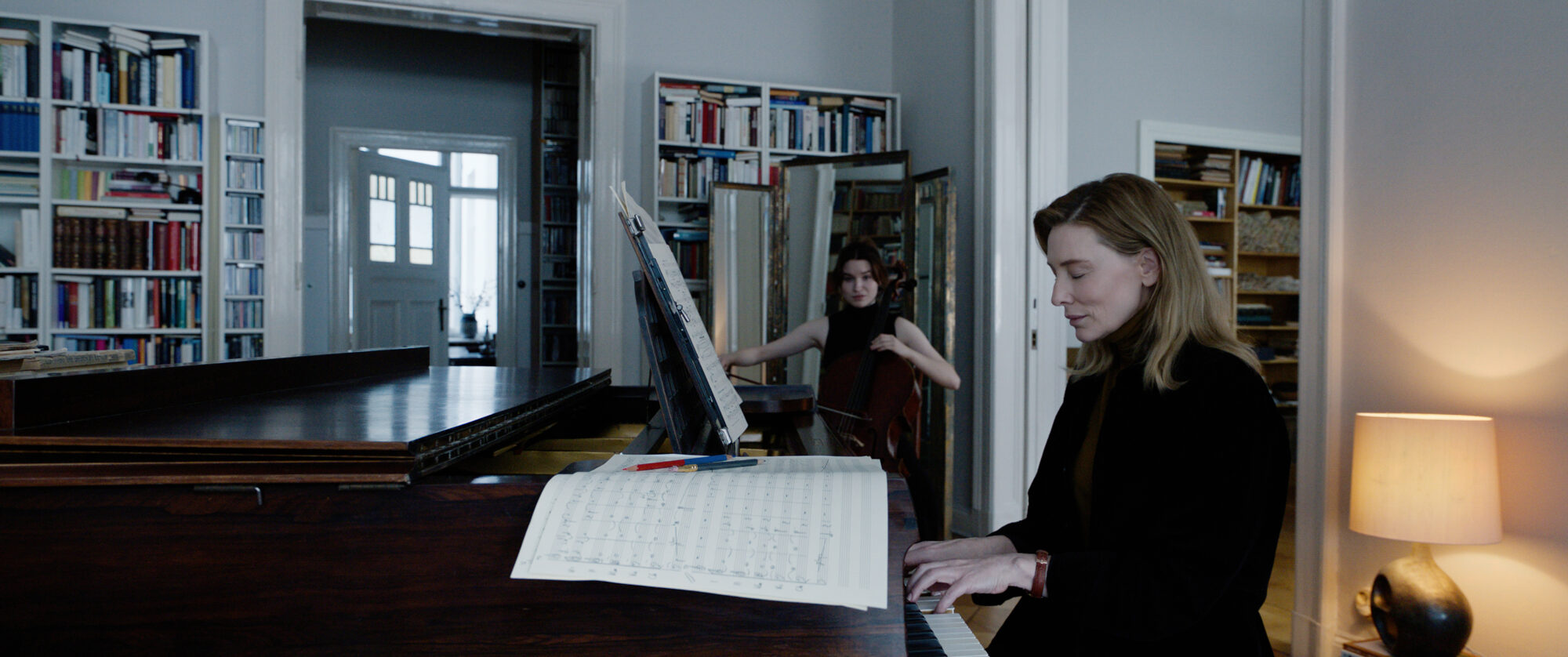
Tár rehearses Edward Elgar's Cello Concerto with newly admitted orchestra cellist Olga Metkina (Sophie Kauer, background). Credit: Courtesy Focus Features
WFMT: So, for example, that scene where Tár slams a Michael Tilson Thomas recording was shared and approved by the label?
Bright: Yes. This isn't someone saying he's a rubbish conductor, or they're a rubbish orchestra—it’s within the critical assessment of music that anyone who knows about classical music might have. It makes me happy that was their decision, because I feel like they understood it.
WFMT: I felt that barb served to illustrate Tár’s divisive personality, which really drives the entire plot and, ultimately, her downfall. High-profile skeptics of the film have taken issue with Tár’s portrayal of a deeply flawed female conductor when so few women are on the podium to begin with. What do you make of those criticisms?
Bright: I believe Tár is a complex character, and that there's loads to love about her. You see her as such a captivating person. Personally, I suppose my basic thing is: Would the plot be better if Tár were a male conductor? I'm happy it’s normalized in the film’s universe that a woman could lead a major orchestra. That’s one of the things that drew me to the script initially: It just wasn’t an issue.
WFMT: The orchestra Tár presides over for much of the film is essentially a proxy for the Berlin Philharmonic. That would mean she holds one of classical music’s most coveted conducting posts. But the orchestra featured in the film is actually the Dresden Philharmonic. How did that come together?
Bright: For a variety of reasons, it wasn’t possible to film with the Berlin Philharmonic. Not only is Dresden a great orchestra, but that hall is amazing. In terms of both the visual and the sound — and the fact that it's not too far from Berlin, where all the other filming was happening — it just seemed ideal to work with them.
We were so lucky. It's rare to have classical music on screen in that way. Tár could be about any sphere of excellence — it could have been a sports movie, or about a politician. But we've had quite a lot of those. So, how amazing that this one is in the classical world, and in such an authentic and careful way?
Maybe someone came away from that film and looked up Anna Thorvaldsdóttir, or maybe they liked hearing Tár play that Bach on the piano and thought, “Oh, actually, I'll hear more of that…” If anyone comes out of it and listens to any of that music? Brilliant.
This interview has been lightly edited for length and clarity. For more information about Tár, visit focusfeatures.com.

